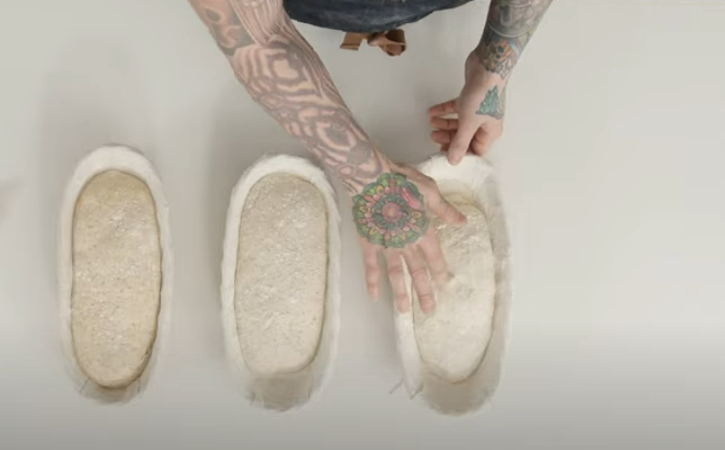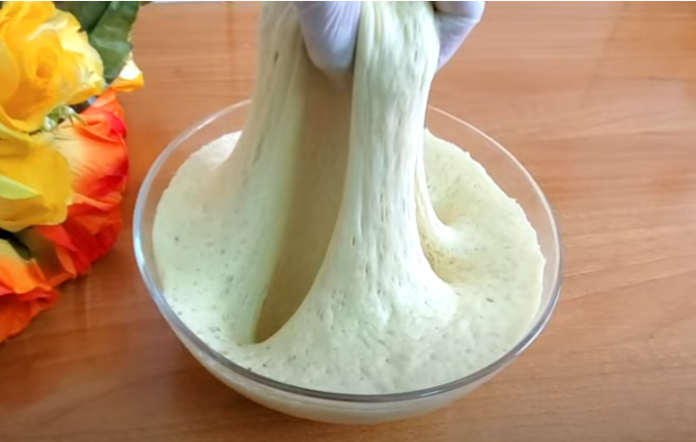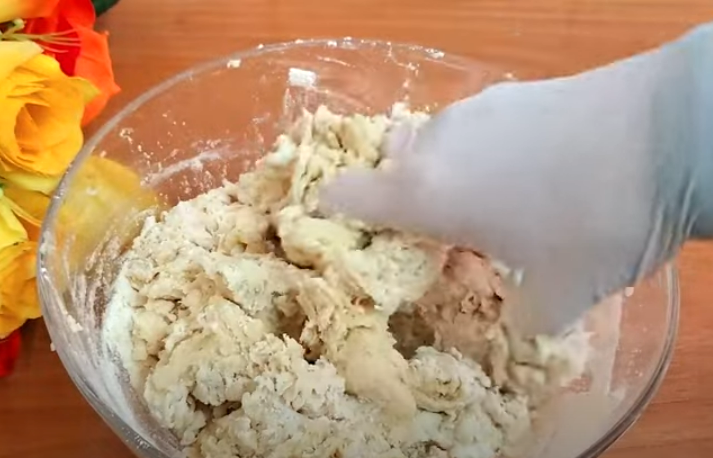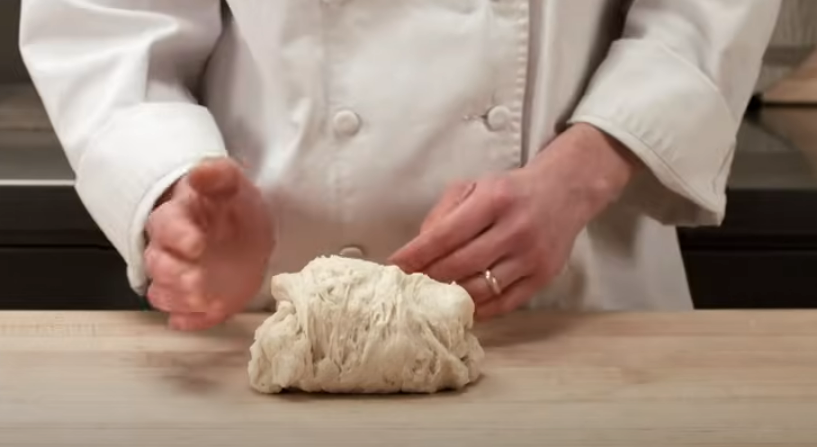How to Soften Pizza Dough: Let it rest covered in a warm, moist environment for about 15–30 minutes. This allows the gluten to relax and the dough to become more pliable.
Softening the dough makes it easier to stretch and shape, resulting in a lighter and more airy crust. The properly softened dough will also bake evenly and develop a better texture. By following these simple steps, you can ensure that your pizza dough has the perfect consistency for a delicious homemade pizza that everyone will enjoy.
Let’s dive into the process of softening pizza dough and learn some tips and tricks to achieve the best results.
Importance Of Soft Pizza Dough
Soft pizza dough plays a crucial role in creating a delightful pizza experience. The dough’s soft texture enhances the overall quality of the pizza, contributing to an enjoyable dining moment.
Better Texture
Soft pizza dough results in a tender and light texture, ensuring a pleasant mouthfeel for each bite. It creates a delicate yet resilient base that supports the toppings well, enhancing the pizza experience.
Easier To Work With
How to Soften Pizza Dough: pliable and easier to stretch and shape, making the pizza preparation smoother. It allows for better control over the dough, facilitating the creation of a perfectly sized and shaped pizza crust.
Improved Taste
Soft pizza dough leads to a more flavorful end product, as it traps and retains moisture during baking. This moisture contributes to a chewy and flavorful crust that complements the toppings, resulting in a delicious pizza every time.
Choosing The Right Ingredients
When it comes to choosing the right ingredients for softening pizza dough, there are a few key factors to consider. By selecting the best quality flour and yeast and maintaining the correct liquid ratio, you can achieve a dough that is perfectly soft and delicious.
The Source: Why is My Pizza Dough Shrinking
High-quality Flour
Start with high-quality flour for the best results. Look for unbleached all-purpose or bread flour with a protein content of around 12%–14%.
Yeast Selection
- opt for active dry yeast or instant yeast
- check the expiration date to ensure the yeast is fresh
- store yeast in a cool, dry place
Liquid Ratio
- maintain a proper liquid-to-flour ratio
- adjust the liquid amount based on the desired dough consistency
- use warm water for better yeast activation
Temperature And Resting Time
To soften pizza dough, allow it to rest at room temperature for at least 30 minutes. This gives the gluten proteins time to relax, making the dough easier to stretch and shape. As a result, the texture of the pizza crust will be lighter and airier, creating a better overall dining experience.
Room Temperature Ingredients
Pizza dough needs to be soft and pliable to achieve that perfect, chewy crust. One important factor in achieving the desired texture is starting with room-temperature ingredients.
When making your pizza dough, make sure to take your ingredients out of the fridge ahead of time so they can come to room temperature. This is especially important for ingredients like water, yeast, and eggs.
Allowing your ingredients to reach room temperature helps activate the yeast, allowing it to ferment properly and create the airy and light texture that is characteristic of a good pizza crust.
Proper Dough Resting
Another crucial step in softening pizza dough is allowing it to rest at room temperature after it has been mixed.
Resting the dough for a sufficient amount of time allows the gluten to relax and the dough to rise, resulting in a more tender and airy crust.
Cold Fermentation
In addition to room temperature resting, cold fermentation can also be used to further enhance the softness of pizza dough.
Cold fermentation involves letting the dough rise in the refrigerator for an extended period, allowing the flavors to develop and the dough to become more tender.
This method is particularly helpful in achieving that coveted chewy texture in Neapolitan-style pizza crusts.
During the cold fermentation process, the dough undergoes a slow rise, which promotes the development of more complex flavors and a softer texture.
Table: Pizza Dough Softening Techniques
| Technique | Description |
|---|---|
| Room Temperature Ingredients | Allow ingredients to come to room temperature before mixing to activate the yeast properly. |
| Proper Dough Resting | Let the dough rest after mixing to allow the gluten to relax and the dough to rise, resulting in a tender crust. |
| Cold Fermentation | Refrigerate the dough for an extended period to enhance flavors and achieve a softer texture. |
By following these temperature and resting time techniques, you can ensure that your pizza dough is soft, pliable, and perfect for creating delicious pizzas with a chewy crust. So next time you’re making pizza at home, give these methods a try and enjoy the difference they make!
Kneading Techniques
Kneading techniques are crucial in the process of softening pizza dough. By using the right method, you can achieve a perfect, elastic texture that is ideal for creating delicious homemade pizzas.
Stretch And Fold
The stretch and fold technique involves grabbing a portion of the dough, stretching it out, and then folding it back onto itself. Repeat this motion several times until the dough becomes smooth and springy. This process helps build gluten and develop the dough’s structure, resulting in a light and airy crust.
Hand Kneading
Hand kneading is a traditional method that involves using the heels of your hands to push and fold the dough. This technique allows you to feel the dough’s texture and adjust the pressure accordingly, ensuring an even distribution of ingredients and a well-developed gluten network.
Mixing Methods
Experiment with different mixing methods, such as the autolyze technique, which involves allowing the flour and water to rest before kneading. This can create a smoother dough, making it easier to achieve a soft texture. By letting the dough rest, you allow the flour to fully hydrate, resulting in a more relaxed gluten structure.
Stand Mixer
A stand mixer with a dough hook attachment can simplify the kneading process. This method is efficient and consistent, allowing the dough to be kneaded to the perfect smoothness and elasticity without requiring manual effort. Using a stand mixer can also save time and effort, especially when preparing large batches of pizza dough.
Food Processor
Utilizing a food processor with a dough blade, you can quickly combine and knead the ingredients. The pulsating motion of the blade helps develop the gluten in the dough. This method is convenient for busy individuals who still want to achieve a soft and tender pizza dough without extensive manual labor.
Stretching And shaking
In the process of making a delicious homemade pizza, stretching and shaping the dough is a crucial step that contributes to the final product’s texture and taste. The way you handle the dough during this stage can greatly affect the outcome of your pizza. Here, we will explore three different techniques for stretching and shaping pizza dough: Hand Stretching, Rolling Pin Technique, and Dough Tossing.
Hand Stretching
Hand stretching is a traditional method of shaping pizza dough that allows you to maintain control over the thickness and shape of the crust. To begin, lightly flour your hands and the work surface to prevent sticking. Gently press the dough with your fingertips, gradually stretching it outwards from the center while rotating the dough to achieve an even thickness. Continue this process until the dough reaches the desired size and shape.
Rolling Pin Technique
The rolling pin technique is ideal for achieving a consistently thin crust for your pizza. Flour the dough and the rolling pin to prevent sticking. Starting from the center of the dough, roll outwards in all directions while rotating the dough to maintain an even thickness. Be careful not to apply excessive pressure, as this can compress the air pockets in the dough, resulting in a dense crust.
Dough Tossing
Professional pizzaiolos frequently use the skillful technique of “pizza spinning,” also known as dough tossing. While it may seem daunting, with practice, you can master this technique to create a light and airy crust. After flouring the dough, lift it from the surface and rotate it between your hands, allowing gravity to stretch the dough. Gradually toss the dough into the air and catch it, repeating this process to achieve the desired thinness.
Proofing The Dough

Proofing the dough is an essential step in making a soft and fluffy pizza crust. It involves allowing the dough to rise before baking, which helps develop the gluten in the dough and creates air pockets for a light and airy texture.
Proofing Methods
There are several methods you can use to proof your pizza dough, depending on your availability and preference. Here are a few popular options:
Proofing Time And Temperature
The time and temperature at which you proof your pizza dough can significantly impact its texture and flavor. Here are some general guidelines:
Room Temperature: If you don’t have much time, you can proof the dough at room temperature. This method usually takes around 1–2 hours to rise. Keep the dough covered with a clean towel to retain moisture and prevent it from drying out.
Refrigerator: If you prefer a longer fermentation process, you can proof the dough in the refrigerator. Simply place the dough in a well-oiled bowl, cover it with plastic wrap, and let it rise overnight. This slow fermentation process imparts a delicious flavor to the crust.
Using a Proofing Box: A proofing box is a temperature-controlled environment that provides optimal conditions for dough proofing. It helps regulate the temperature and humidity, resulting in a consistent and predictable rise. Set the temperature to around 80–85°F (27–29°C) for best results.
Using A Proofing Box
If you’re serious about baking and want to take your dough proofing to the next level, investing in a proofing box may be worth considering. Here’s how you can use a proofing box to proof your pizza dough:
- Place the dough in a well-greased bowl and cover it with a damp cloth or plastic wrap.
- Set the proofing box to the desired temperature, typically around 80–85°F (27-29°C).
- Allow the dough to rise in the proofing box for the recommended time, which is usually around 1-2 hours, depending on the recipe.
- Once the dough has doubled in size, it is ready to be shaped and baked.
Using a proofing box ensures consistent results every time, as the controlled temperature helps activate the yeast and promote optimal fermentation.
Now that you have an understanding of proofing methods and the importance of time and temperature, you can achieve the perfect rise and softness in your pizza dough. Experiment with different proofing techniques to find the method that works best for you and enjoy homemade pizzas with irresistibly soft and fluffy crusts.
Baking Tips For Soft Crust
Creating a soft and delicious pizza crust involves more than just the dough itself. Utilizing the right baking techniques can make all the difference. Here are some essential tips for achieving a soft crust that will have everyone craving for more.
Preheating The Oven
Preheat your oven thoroughly to provide the ideal environment for baking pizza. A well-preheated oven ensures that the crust cooks evenly and retains its softness.
Baking Surface
The surface on which you bake your pizza can influence the final texture of the crust. Opt for a pizza stone or a baking sheet to promote a crispy yet soft crust.
Steam In The Oven
Introducing steam into the oven while baking can help create a soft and chewy crust. Place a pan of water in the oven to generate steam that keeps the crust from becoming too hard.
Resting And Cutting
When it comes to making the perfect pizza, one essential step is ensuring your dough is soft and well-prepared. In this post, we’ll delve into the importance of allowing the dough to rest and the proper cutting techniques to achieve a delicious pizza crust.
Allowing The Dough To Rest
Before proceeding to shape your pizza dough, it is crucial to allow it to rest. This rest period helps the gluten relax, making the dough easier to work with and making the final product more pliable.
Proper Cutting Techniques
When it comes to cutting pizza dough, utilizing proper techniques is essential for achieving the desired texture and consistency. Be sure to use a sharp knife or dough cutter to avoid tearing or squishing the dough.
Frequently Asked Questions Of How To Soften Pizza Dough
How Do You Soften Pizza Dough Without Waiting For It To Come To Room Temperature?
To soften pizza dough quickly, remove it from the fridge, then cover it with a damp cloth and microwave for 10–15 seconds on low power.
Can I use warm water to soften the pizza dough faster?
Yes, using warm water in the dough will help to soften it faster. The warm temperature activates the yeast more quickly, making the dough easier to work with.
What Is The Best Method To Bring Back Softness To Refrigerated Pizza Dough?
To bring back the softness of refrigerated pizza dough, take it out of the fridge, allow it to rest at room temperature for 30 minutes, and then gently knead it to restore its softness.
Why Does Refrigerated Pizza Dough Become Hard?
Refrigerated pizza dough becomes hard due to the cold temperature, causing the gluten in the dough to tighten and stiffen. This makes the dough less pliable and harder to work with.
Conclusion
To sum up, softening pizza dough is a crucial step in achieving a delicious and enjoyable pizza. By following the techniques mentioned in this blog post, such as adjusting the recipe ratios, incorporating additional ingredients, and allowing proper resting time, you can easily achieve a softer and more flavorful pizza crust.
Experiment with different methods and find the one that suits your preferences best. So, go ahead and get creative in the kitchen, and surprise your taste buds with a perfectly soft and irresistible pizza crust. Happy baking!



